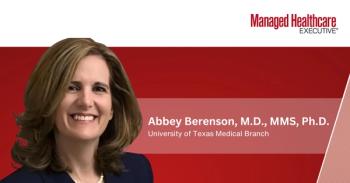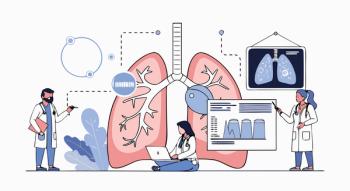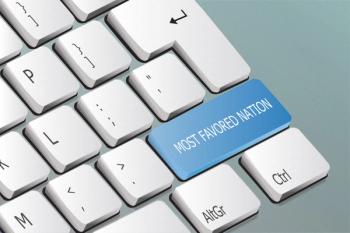
Top 14 apps for healthcare executives to watch
We asked healthcare industry leaders, what apps should managed care executives check out? Here's what they said.
Development of healthcare apps for patients continues to grow as consumers are rapidly increasing their involvement in their healthcare.
“While a majority of the health and medical apps are focused on general wellness, both healthcare professionals and patients are showing increasing interest in apps that help streamline the patient experience,” says John Santilli, partner, Access Market Intelligence.
Here are 14 apps to watch.
2nd.MD
This app offers patients direct access to second opinions via video or phone from doctors at Boston Children’s Hospital, Memorial Sloan Kettering, Mayo Clinic, Cleveland Clinic. It offers top clinicians access to patients for a consultation fee either reimbursed by an employer plan or paid out of pocket, says Gandhi. “This direct to consumer-or via employer-model is empowering patients who are seeking additional clinical opinion before embarking on a treatment plan.”
b.Well
The app stores medical records and insurance information, integrates with wearable and genomic data, and lets users view financial information about their benefits plans. Users can also search for a provider, schedule appointments and search for price comparisons on prescription drugs.
“This technology encourages consumerism in healthcare, using data and technology to help simplify the experience of managing health and insurance,” says Michael Levin, cofounder and CEO of Vericred.
CareZone
John Santilli, partner, Access Market Intelligence, says this app offers patients a platform to store and organize all paperwork and appointment dates related to their care. “Visits to physicians can generate a great deal of paperwork for patients to keep organized,” Santilli says. “CareZone can be used to manage all family members’ care. The CareZone app is automatically updated with medication information, a journal for easy reference and notes, and relevant health news.”
HRProMobile
“HRProMobile is the first mobile app designed to make HR compliance easier. It provides instant access to live HR consultants, along with exclusive content, tools, and training materials,” says David A. Reid, founder and CEO of Easecentral. “HR rules and regulations are changing all the time. HRAnswerLink’s HRProMobile app puts a team of HR professionals by your side whenever you need them.” The app is available through HRAnswerLink’s network of insurance broker partners.
Pillsy
Pillsy is a smart pill bottle and app. The bottle syncs to the Pillsy smartphone app, helping patients keep track of when they take their medications and when to refill their prescription.
“The app allows patients to communicate directly with healthcare providers to quickly address questions and enables self-care, relieving a portion of the burden on healthcare providers,” Levin says. “Healthcare providers can use Pillsy to remotely monitor their highest-risk patients, improving medication adherence and reducing hospital readmissions.”
SoleraONE
This app, powered by HealthSlate’s leading Diabetes Prevention Program (DPP) software platform, expands consumer access and lowers program delivery costs for community-based DPP providers. “Since the DPP has been proven effective by the CDC, there’s a great opportunity for digital tools that can help community-based DPP providers when participants are unavailable to attend in-person meetings,” says Alissa Singer, senior program manager, Greater Los Angeles American Diabetes Association, which operates an in-person DPP in Los Angeles. “This digital approach allows in-person program participants the ability to easily access curriculum and coaches remotely to make up missed content on their own time without missing a beat.”
Stroll Health
Levin recommends Stroll, an imaging referral management application used by hospitals, physicians and clinics. It is an application that can output to any device, mobile or desktop.
“When a patient is referred by a doctor for medical imaging, they are not always sent to the best value imaging sites,” he says. “And if patients don’t know that they have a choice, they can end up overspending thousands of dollars. Stroll brings transparency and efficiency to this process by delivering personalized recommendations based on what is covered by the patient’s insurance plan, where they live and how much they can afford.”
My Care app, Group Health Cooperative
This is a favorite app of Mayank Gandhi, senior director of information management & analytics, Healthcare & Life Sciences, NTT DATA. The app, which is available to members of Group Health Cooperative, serves as an example of what other plans might consider providing. Members can schedule appointments, check wait times and receive directions through the app. In addition, a user can call a 24/7 phone number through the app to check on their symptoms. Some future features that will benefit the users include the ability to update personal information and share with providers to eliminate duplicative, repetitive paperwork or connect with an online community to share symptoms, treatment and dietary regimens based on specific conditions.
Mobile Health Library(MHL)
“MHL enables an integrated patient journey and brings brand education, dosing reminders, forms and enrollment, and patient diaries-think clinical trial even before mass market-into the hands of the patient with access by the trial doctors and researchers,” says Adam Nelson, vice president of Healthcare & Life Sciences, NTT DATA. “… For the providers, tracking a community of patients and their adherence, outcomes, and side effects becomes an integrated and aggregated view, and with the shift to outcome-based payments and risk sharing, providers benefit from this approach.”
Everseat
Everseat is a patient-centered scheduling platform that helps patients get access to appointments they need with their healthcare providers. “Appointments are posted and claimed in real-time, significantly increasing efficiency for the providers, and dramatically improving the patient experience,” Santilli says.
HealthLoop
HealthLoop works by automating the routine aspects of care while tracking patient progress and monitoring clinical areas of concern. The app sifts through patient data in real time, providing outreach when most needed and tracking patients through an episode of care. “Patients rate their doctors with a five-star experience and providers realize better efficiencies with an automated patient check-in approach,” Santilli says.
Zest Health
Santilli recommends this consumer-focused “smart concierge” app. It provides a medical condition research tool and uses third-party pricing and quality measures to steer patients to the most effective, quality-based providers based on the network doctors.
GlucosePath
GlucosePath, which is in clinical trial through summer of 2017, is a decision support tool to help patients and providers make smart and cost-effective choices to treat type 2 diabetes mellitus.
“Treatment options often involve many different drugs, or a combination of drugs,” says Levin. “The tool takes into consideration a variety of factors including cost, adherence, and mechanism of action, among others. Millions of therapy combinations are evaluated in about 60 seconds, and five options are presented along with the pros and cons of each. The speed at which technology can perform these tasks will help overburdened doctors make accurate recommendations more quickly, resulting in better patient care at a lower cost to the patient.”
PixelDerm
Through the PixelDerm app, users receive direct access to board-certified dermatologists for treatment of skin and hair conditions. The cost for each visit is $40, and the patient receives a personalized treatment plan within one business day and 30 days of post-visit messaging with the dermatologist. “These types of models are building an alternate network of doctors that can be accessed outside health insurance plans and local geographic networks, for a consultation fee,” says Gandhi.
Newsletter
Get the latest industry news, event updates, and more from Managed healthcare Executive.



















































